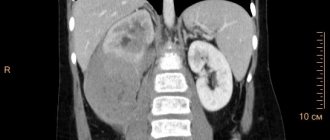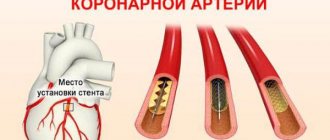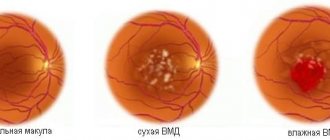Cancer is a disease that is caused by cell mutation. Cancer cells differ from healthy cells in that their cell cycle does not work properly. A healthy cell has several cycle stages:
- division;
- height;
- maturation;
- aging;
- dying off.
Cancer cells also divide, only at a faster rate. In addition, they may not die, forming clusters or tumors. They can form in the body of any person. But the general condition of the body and immunity plays a big role, since it depends on whether the body can independently overcome the development of the disease.
Types of cancer
Affected cells can occur in any human organ. Therefore, cancer can be called a group of diseases. The specific definition of the disease depends on which organs are affected:
- if the hematopoietic system is affected, it is leukemia;
- if the lymphatic system is affected, it is lymphoma;
- if nervous, connective or supporting tissue is affected, it is sarcoma;
- if the epithelial tissue of an organ is affected, it is carcinoma;
- if the skin is affected, it is melanoma.
There are also other types of cancer such as teratoma, glioma, choriocarcinoma, blastoma. Some types of cancer are less common, some more common. But this is the danger of rare species - they have not been studied so well, so they often lead to death.
At what stage can cancer be cured?
In oncology, instead of the terms “cure” and “recovery,” it is customary to say “remission.” This means that during the examination the patient does not show any signs of the presence of cancer in the body. But there is always a risk of relapse. If the disease has not returned within five years, in a certain sense the person can be considered recovered.
The likelihood of remission is highest for cancer stages 0 and I. The five-year survival rate for such patients approaches 100%. In stage II, the prognosis is more serious, but remission can still be achieved in many patients. At stage III, some patients can still be cured; the rest are given palliative treatment, which helps slow down the progression of cancer, cope with painful symptoms, and prolong life. At stage IV, remission is possible only in extremely rare cases; its probability is negligible. In such patients, palliative treatment is mainly carried out. Of course, this is very generalized data. You should always talk not about cancer in general, but about its specific types. Because cancer comes in different forms.
Book a consultation 24 hours a day
+7+7+78
How does cancer occur?
As mentioned above, cancer is nothing more than a malfunction of the cellular structure. Each cell of the body has a Heflick limit - this is a certain number of divisions that a cell can make, after which it dies. Due to a number of reasons, a cell may lose this limitation. Therefore, it begins to divide randomly and does not die.
As for fission, a certain amount of energy is spent on it. And if division occurs constantly, then more energy is expended. Because of this, the cell ceases to perform the functions that were originally assigned to it and becomes cancerous.
Cancers are also called malignant tumors. Their difference from benign ones is that the former, although they lose the Heflick limit, do not cease to perform their functions and do not change their structure. And in malignant tumors, cells change in structure and degree of development. Because of this, they can grow into other organs.
Basic principles of TNM classification
“T” – primary tumor
- “x” – the preliminary size of the identified formation is estimated;
- "Tis" defines carcinoma of the preinvasive type;
- the prevalence of cancer or an increase in size is recorded in numbers (T1, T2, etc.);
- T0 – indicates the absence of detection of the primary tumor.
N – lymph nodes
- N0 – metastases are not defined / not detected;
- to determine the degree of damage to regional lymph nodes by metastases, the numbers used are N1, 2, 3
- NX – it is not possible to assess the condition of regional lymph nodes due to the lack of and insufficiently collected necessary data.
M – metastases of localized localization
- M1 – metastases identified;
- M0 – absence of metastases in distant localization;
- MX – there is no possibility of determining data on the presence or absence of metastases, which is justified by the insufficiency of the collected data.
Often, after the designation M, the name of the organ in which metastases are found is indicated in parentheses. For example, M1 (lym) means the presence of metastases in the lymph nodes, M1 (mar) - in the bone marrow. The table below shows letter designations for other organs.
Histopathological differentiation can also be used to determine TNM classification, revealing detailed information about the primary tumor being examined. This data is marked with the following meaning:
- GX – lack of data to establish the degree of differentiation;
- G1/ G2/ G3 – degree of damage (high, medium or low);
- G4 – identifies an undifferentiated cancerous tumor.
The classification of cancer education according to the international TNM system fully reveals the prevalence of the process with mandatory consideration of the location and general principles based on the individual characteristics of the anatomical zone of the human body where cancer was identified.
What are the symptoms of cancer?
Oncological diseases in their initial stages affect one organ. But since the affected cells have the ability to rapidly divide, the disease affects not only the functioning of a particular organ or organ system, but also the body as a whole.
General symptoms of the disease:
- deterioration of the person’s general condition – appetite decreases, the person loses weight, feels weak;
- anemia – the color of the skin changes to paler, dizziness and fainting are observed;
- immunity decreases as the body fights cancer cells, which is why it cannot resist other infections and viruses;
- pain occurs, but this symptom appears in later stages of cancer;
- in case of serious diseases, liver function is disrupted, which is why the skin may turn yellow;
- inflammatory processes that are accompanied by high temperature;
- lymph nodes enlarge, as they are responsible for cleansing the body, but this symptom can occur both on the first and second
- last stage of cancer.
Sentinel lymph node
When a surgeon operates on a cancer patient, he often has to decide a difficult question: should he remove regional lymph nodes? If they contain cancer cells and they are left in the patient's body, a relapse will occur. If you remove “clean” lymph nodes, this is fraught with a complication in the form of lymphedema - swelling in the arm or leg due to a violation of the outflow of lymph.
Previously, doctors often preferred the lesser evil and removed lymph nodes “just in case.” Modern surgeons no longer act blindly and can more accurately determine the indications for lymph node dissection. This was made possible by the advent of sentinel lymph node biopsy or sentinel lymph node biopsy.
A sentinel lymph node (or group of lymph nodes) is the one that first receives lymph flowing from a malignant tumor. It can be detected during surgery: to do this, you need to inject a fluorescent dye or a radioactively labeled drug into the tumor. The drug penetrates the lymphatic vessels, then into the sentinel lymph node and “stains” it. The lymph node is removed and checked for cancer cells.
To indicate the state of the sentinel lymph node, a special classification is used:
- pNX(sn) - the lymph node cannot be assessed.
- pN0(sn) - there are no cancer cells in the sentinel lymph node.
- pN1(sn) - the sentinel lymph node is affected by cancer cells.
If tumor tissue is detected in the sentinel lymph node, this is an indication for removal of regional lymph nodes.
What are the causes of oncology?
In all the years of cancer research, the exact causes of this disease have not been identified. But oncological diseases have a fairly high connection with a number of factors called carcinogens (from the Latin cancer - cancer). These factors can be divided into several groups:
- Genetic. Research shows that a cell's DNA may contain certain defects that could cause that cell to lose its Heflick limit. Therefore, people whose relatives have had cancer are predisposed to this disease.
- Infectious. This group includes some viruses, against the background of which a disruption in the functioning of the body may occur. For example, the human papillomavirus can cause cervical cancer, herpes - various types of lymphomas, hepatitis B and C - liver cancer. This is due to the fact that these viruses “integrate” their genes into cellular DNA during their development.
- Chemical. This group consists of a number of substances that, when ingested, can penetrate the cell nucleus. This can cause DNA to interact with these substances.
- Physical. This group includes different types of radiation (ultraviolet, x-ray). They can destroy the shell of cell atoms, which leads to disruption of the structure of molecules and destruction of the DNA sector that is responsible for the Heflick limit.
- Hormonal. Due to hormonal disorders (excess or lack of hormones), the functioning of the endocrine glands is disrupted. Such changes in the body can lead to cancer of the mammary glands, prostate gland, thyroid gland and others.
- Immunological. This group of factors includes a decrease in the activity of T-leukocytes, which are responsible for fighting diseased cells that differ in structure from healthy ones.
Causes of malignant neoplasms
Scientists have identified a number of causes of malignant neoplasms that can trigger the development of cancer. For convenience, they are usually divided into two large groups: endogenous and exogenous.
Let's take a closer look at each of them.
Endogenous causes of malignant neoplasms:
- immunological hereditary abnormalities (combined immunodeficiency, X-linked agammaglobulinemia, etc.);
- formation of hereditary neoplasms (diffuse polyposis, multiple endocrine adenomatosis);
- an increased risk of malignant formation, but with an unproven hereditary connection, is present in organs such as the lungs, mammary glands, endometrium, large intestine, stomach;
- disruption of the endocrine system;
- the presence of pathologies predisposing to malignant degeneration of cells (for example, xeroderma pigmentosum, Peutz-Jeghers or Down syndrome, Recklinghausen syndrome, multiple exostoses).
Exogenous causes of malignant neoplasms:
- acquired immunodeficiencies;
- radiation with a low dose of exposure (diagnosis using X-ray devices, ultraviolet irradiation, etc.);
- radiation with a high degree of radiation exposure (nuclear weapons, radiation therapy, nuclear power plant accidents);
- the influence of chemical carcinogens, in particular industrial products (inorganic compounds - nickel, chromium, arsenic, cadmium, etc., organic compounds - asbestosis, gasoline, vinyl chlorides, coal tars, benzidine, etc.);
- negative effects of certain medications (immunosuppressants, alkylating medications, testosterone, estrogen, procarbozines, phenacetin, etc.);
- exposure to bad habits (drinking alcohol and smoking);
- incorrect and irrational diet;
- improper processing of products and poor hygiene;
- infection with infectious elements - fungi (aflotoxin), parasites (schistosomiasis), hepatitis B, African Burkitt's lymphoma, hepatocellular cancer, nasopharyngeal carcinoma.
Methods of treating oncopathologies
Cancer is a serious disease, and when patients hear this diagnosis, they often immediately judge themselves. But cancer research is moving forward. Therefore, now we cannot say that this is a disease that necessarily leads to death.
There are several paths to recovery, the first of which is surgical. The tumor is removed to prevent diseased cells from continuing to grow. At the first stage of cancer development, surgical intervention can completely eliminate the further development of pathology.
Chemotherapy
– This is treatment with drugs that suppress the functioning of cancer cells. This causes them to stop dividing and the tumor stops growing.
Irradiation
is a type of treatment that uses high-energy rays that kill diseased cells. Used in conjunction with surgery and chemotherapy.
Hormonal treatment
used if the mammary glands are affected. This treatment suppresses the increase in the number of diseased cells.
Immunotherapy is also used
, during which the body’s immunity is stimulated to work. Through this treatment, the cells are destroyed by antibodies.
In addition, there is treatment with inhibitors that interact with proteins of diseased cells, causing them to stop dividing. Oncology treatment is individualized, and several methods are almost always used together.
The Clinic of Dr. Paramonov employs highly qualified oncologists and uses advanced methods and developments in the treatment of oncological pathologies. You can make an appointment with an oncologist by calling 8 (8452) 66-03-03.
Stages of malignant neoplasms
Based on the degree of aggressiveness of the disease and its spread throughout the body, there are 4 stages of malignant neoplasms.
Let's look at the signs of each of them:
- Stage 1 - the appearance of the first malignant cells, transformed from normal ones. The size of the pathological formation in diameter does not exceed 2 cm. It is difficult to diagnose and occurs without obvious symptoms. It responds well to treatment, in 95% of cases patients recover completely.
- Stage 2 - the tumor has already reached 5 cm, but metastases are rarely detected (individual malignant cells in the bloodstream or lymph nodes are possible). The patient’s general health is deteriorating, so one can suspect the disease and undergo the necessary examination in a timely manner. Successful treatment is achieved in 75% of cases.
- Stage 3 - the pathological formation enters the active growth phase and exceeds 5 cm in size. It affects neighboring tissues and organs, quickly spreading through the lymphatic and circulatory systems. Metastases are found in different areas of the body, which can be single or located in groups. The symptoms are pronounced, the functioning of the whole body is disrupted. Depending on the type of oncology, 25-50% of patients achieve success in treatment.
- Stage 4 - extensive damage by malignant cells, numerous and distantly located metastases that occur very quickly, despite the treatment. Therapy is aimed at maximizing the patient's life and relieving symptoms.
The stages of malignant neoplasms are determined after a thorough examination and consultation with an oncologist.
How healthy cells and tissues are renewed
All human organs and tissues are made of cells.
They have the same DNA, but take different forms and perform different functions. Some cells fight bacteria, others transport nutrients, others protect us from the effects of the external environment, others make up organs and tissues. At the same time, almost all cells are renewed so that the human body grows, functions and recovers from damage. Cell renewal is regulated by growth factors. These are proteins that bind to receptors on the cell membrane and stimulate the division process. When a new cell separates from its parent, a cascade of reactions is launched in it, and it becomes specialized - differentiated. After differentiation, only those genes that determine its shape and purpose are active in the cell. We can say that now the cell has personal instructions on what and how to do.
All tissues renew themselves at different rates. The cells of the central nervous system and the lens of the eye do not divide at all, and the epithelial cells of the small intestine are completely replaced every 4-5 days. Tissues that are constantly renewed contain a layer of stem cells. These cells have no specialization, but can only divide and create either a copy of themselves without specialization, or a differentiated cell of the tissue in which they are located.
New cells replace damaged old ones. The damaged cell “understands” that it will no longer bring benefit to the body, and launches a death program - apoptosis: the cell commits voluntary suicide and gives way to a healthy one.
On a note
- What patients call cancer in medical language means an oncological disease or malignant tumor. It is a collection of abnormal, abnormal cells that divide uncontrollably and refuse to die.
- In the medical community, “cancer” is only carcinoma, a malignant tumor of epithelial tissue. Other malignant tumors include sarcoma, melanoma, leukemia and lymphoma.
- Once tumor cells gain access to nutrients and begin to grow into neighboring tissues, it is considered malignant.
- Over time, cells appear in it that can suppress the immune system and cells that form metastases. Therefore, cancer is not easy to treat.
- You can protect yourself from cancer by taking preventative measures, such as quitting smoking and protecting yourself from ultraviolet radiation. And regular medical examinations will help diagnose malignancy at an early stage: then it is easier to cure.
In the next article, Atlas will tell you in detail how to reduce the risks of developing malignant neoplasms, and will also give instructions on when and what examinations to undergo in order to protect yourself.
Not all cancers are malignant
Oncology is a branch of medicine that studies malignant and benign tumors, methods of their diagnosis, prevention, and treatment.
For the first time, the term “oncos”, which means “bloating”, “bubble”, “swelling”, was used by the ancient Greek physician Hippocrates, describing tumors. The healer was able to isolate and identify similar common features in a number of similar diseases. Later, the ancient Roman physician Claudius Galen used this term to refer to neoplasms of any nature. It was his works that gave rise to the modern discipline that studies cell transformation and the process of tumor formation.
Why is cancer called cancer? Lost in translation
Returning to Hippocrates, it is worth mentioning that when studying neoplasm, he took the term “carcinoma” and described it using the association with a crab. The spreading inflammation with its interweaving of veins, size, shape, and color reminded him of this arthropod.
When translating the ancient Greek word "karkinos" into Latin, the Roman physician and philosopher Aulus Cornelius Celsus used the imprecise term "cancer" (cancer), which has entered many languages. Modern medicine uses the Latin word “cancer” to classify cancerous tumors.









